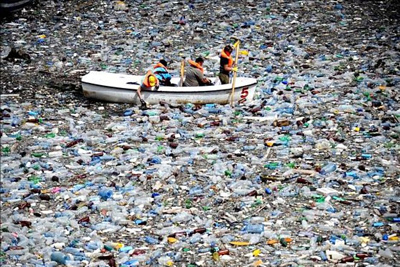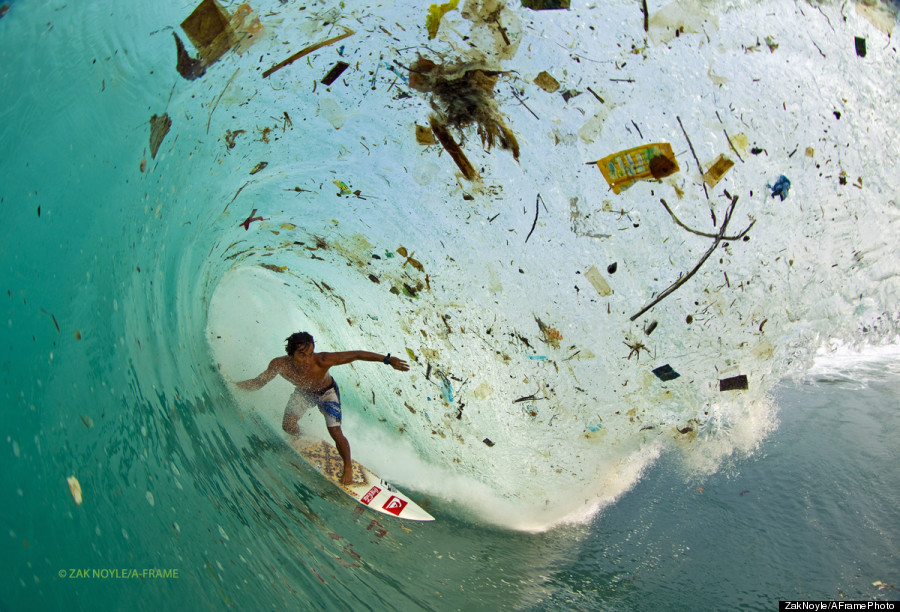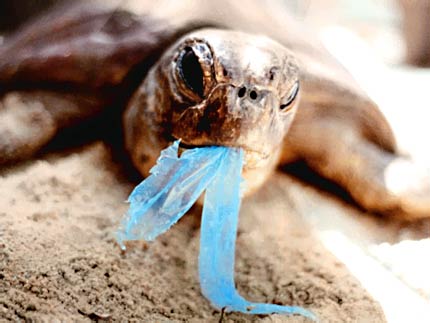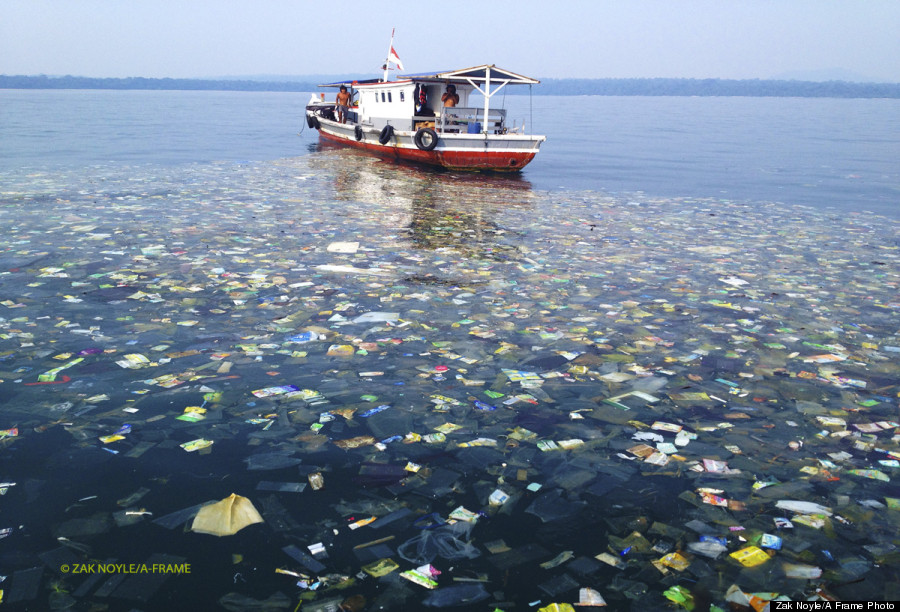Production, use, and fate of all plastics ever made
Roland Geyer, Jenna R. Jambeck, Kara Lavender Science Advances 19 Jul 2017: Vol. 3, no. 7, e1700782 DOI: 10.1126/sciadv.1700782
Plastics have outgrown most man-made materials and have long been under environmental scrutiny. However, robust global information, particularly about their end-of-life fate, is lacking. By identifying and synthesizing dispersed data on production, use, and end-of-life management of polymer resins, synthetic fibers, and additives, we present the first global analysis of all mass-produced plastics ever manufactured. We estimate that 8300 million metric tons (Mt) as of virgin plastics have been produced to date. As of 2015, approximately 6300 Mt of plastic waste had been generated, around 9% of which had been recycled, 12% was incinerated, and 79% was accumulated in landfills or the natural environment. If current production and waste management trends continue, roughly 12,000 Mt of plastic waste will be in landfills or in the natural environment by 2050.
http://advances.sciencemag.org/content/3/7/e1700782
Video on Plastics and Marine Litter by www.seas-at-risk.org
Oceans swamped by plastic ‘soup’
Australian scientists say it will take at least 500 years to stop the growth of five swirling masses of plastic waste in the world’s oceans.

Read the full ABC article here
Health impact of plastic bottled water – study
Endocrine disrupting chemicals (EDCs) are man-made compounds interfering with hormone signaling and thereby adversely affecting human health. Recent reports provide evidence for the presence of EDCs in commercially available bottled water. However, since these findings are based on biological data the causative chemicals remain unidentified and, therefore, inaccessible for toxicological evaluation. Thus, the aim of this study is to assess the antiestrogenic and antiandrogenic activity of bottled water and to identify the causative steroid receptor antagonists. We evaluated the antiestrogenic and antiandrogenic activity of 18 bottled water products in reporter gene assays for human estrogen receptor alpha and androgen receptor.
Waves of trash in Indonesia
excerpt from an article in the Huffington Post

The waves of Java, always known for being pristine and barreling, were now rolling swells of disgusting trash and debris. Photographer Zak Noyle was shooting Indonesian surfer Dede Surinaya in a remote bay when he and Surinaya discovered the water to be covered in garbage. The bay was miles from any town, yet strong currents had carried the trash of the world’s most populated island, Java, to its once pure waters. In addition to the sea of plastic, large objects like tree trunks were being tossed around in the waves.
Indonesia, a country comprised of more than 17,000 islands, suffers from a terrible trash problem that is polluting its waters. Some of the population centers have little to no trash collection infrastructure, leading locals to dispose of their waste in the street or in river beds, after which it inevitably is washed out to sea. Often, the only other disposal option Indonesians have is burning their trash. Incinerating waste creates equally harmful (albeit less visible) damage to the environment. According to the Global Alliance for Incinerator Alternatives, the byproducts of burned waste “produce a variety of toxic discharges to the air, water and ground that are significant sources of a range of powerful pollutants. Many of these toxins enter the food supply.”
continue reading here (if you can put up with it 🙁 Huffington Post


